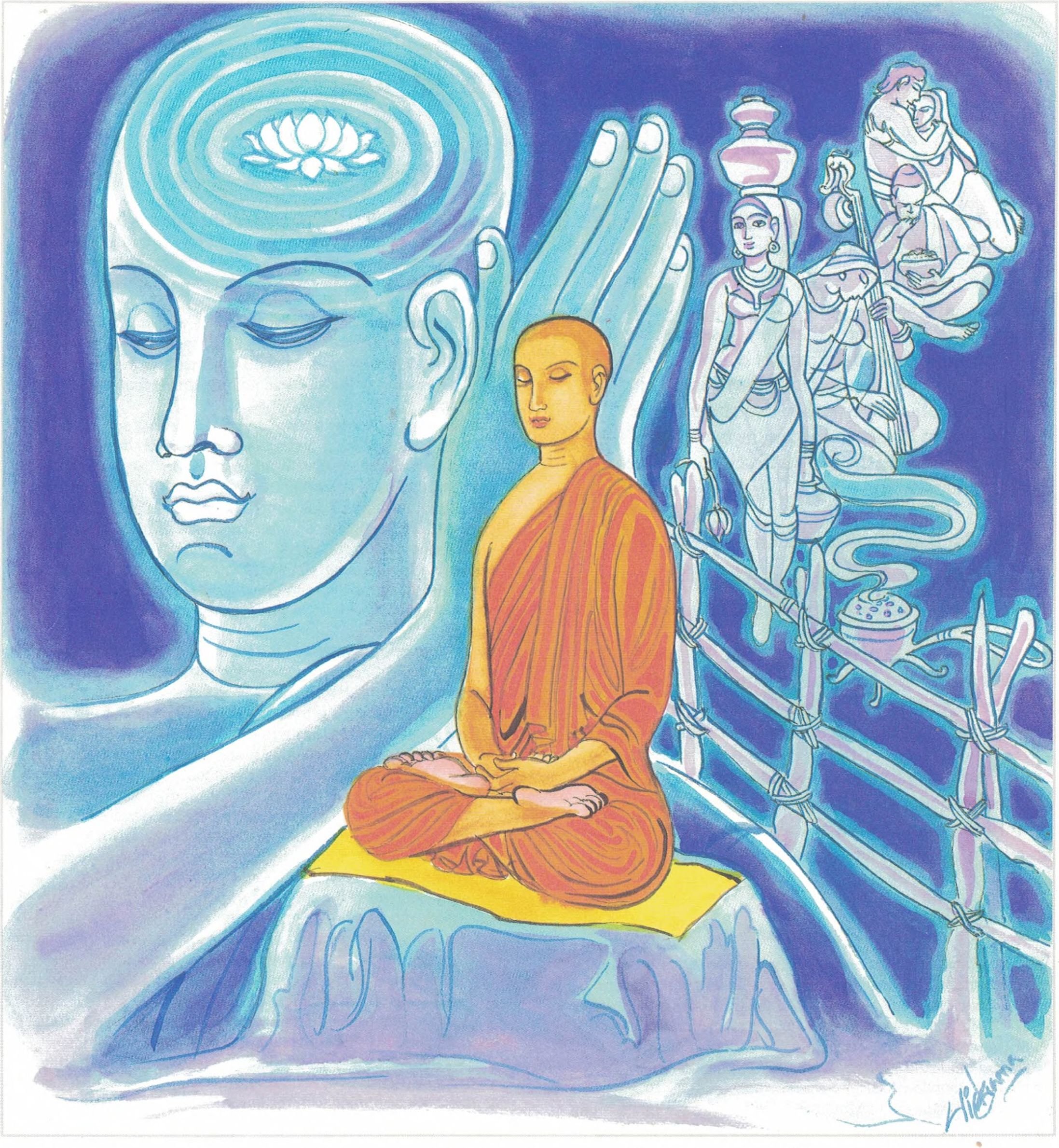The Dhammapada is one of the greatest canonical books in the Buddhistic scriptures. Its name has been variously interpreted. The word dhamma is formed to be used in the Pali language in different meanings. It may mean here either religion or virtue. The word pada also has various meanings, such as word, sentence, place, footstep, &c. Pada might be taken in the sense of “sentence” had it been used in the plural numbers, and that would perhaps give the most appropriate meaning. But here it is best interpreted as “footstep”. Thus, the word Dhammapada may mean either “the footstep of religion” or “the path of virtue”.
The whole of the Buddhistic scriptures is, according to some divided into three Pitakas or Baskets, viz. Vinaya Pitaka, Sutra Pitaka and Abhidhamma Pitaka, and according to others, divided into five Nikayas, viz. Digha Nikaya, Majjhima Nikaya, Samyutta Nikaya, Anguttara Nikaya and Khuddhaka Nikaya. These five names are also given to the five books of the Sutta Pitaka, and these books correspond to each other except the fifth, i.e. the Khuddaka Nikaya. This book includes the other two hooks of the Pitaka division (Vinaya and Abhidhamma Pitakas) over and above, the fifteen books in contains according to that division. One of these fifteen books is the Dhammapada. The division of the Buddhis- tic scriptures into the three Pitakas is however. generally accepted.
There have been various disputes about the date of the Dhammapada (and of the Pitakas), and all that is known on this point is nothing more than approximation. To try to ascertain it from manuscripts will be futile, as, according to Mr. A. Bumell, the greatest authority perhaps in these matters, “it is almost impossible to find one written five hundred years ago.” Neither have the Oriental scholars ventured to ascertain it from mere linguistic evidence. All that has been left to them is to have recourse to the few internal evidences in the scriptures themselves. In the Mahavamsa, it is stated that these Pitakas were first recorded in writing from memory by the wise priests in the reign of Vattagamani, whose reign dated from 88 to 76 B.C. Thus, there can be no doubt that these scriptures existed before the first century before Christ. Dr. Oldenburgh was the first to show two facts which are more impor- tant than any brought forth by others in the attempt to fix the date of the Tripitika. These are, first, that there is no mention made in the Tipitaka of the Third Great Council of Pataliputra held under King Asoka about 242 B.C., and secondly, that both the First Council of Rajagaha held in 477 B.C., and the Second Council of Vesali held in 377 B.C., are mentioned in them. From these facts it may be inferred that the compilation of the Tipitaka in its present form began from the First Great Council, which was held exactly after the death of the Buddha in 477 B.C., and was closed after the Second Council (377 B.C.) and before the Third Council (242 B.C.) This opinion almost corresponds to the view which Buddhists themselves hold, who believe that the whole book was completed in the Second Council. The scholars differ only in this that though the latest date which can be assigned to a Buddhistic canonical writing is 377 B.C., yet some works were added after that date.
The Maha Bodhi Journal/May 1918

